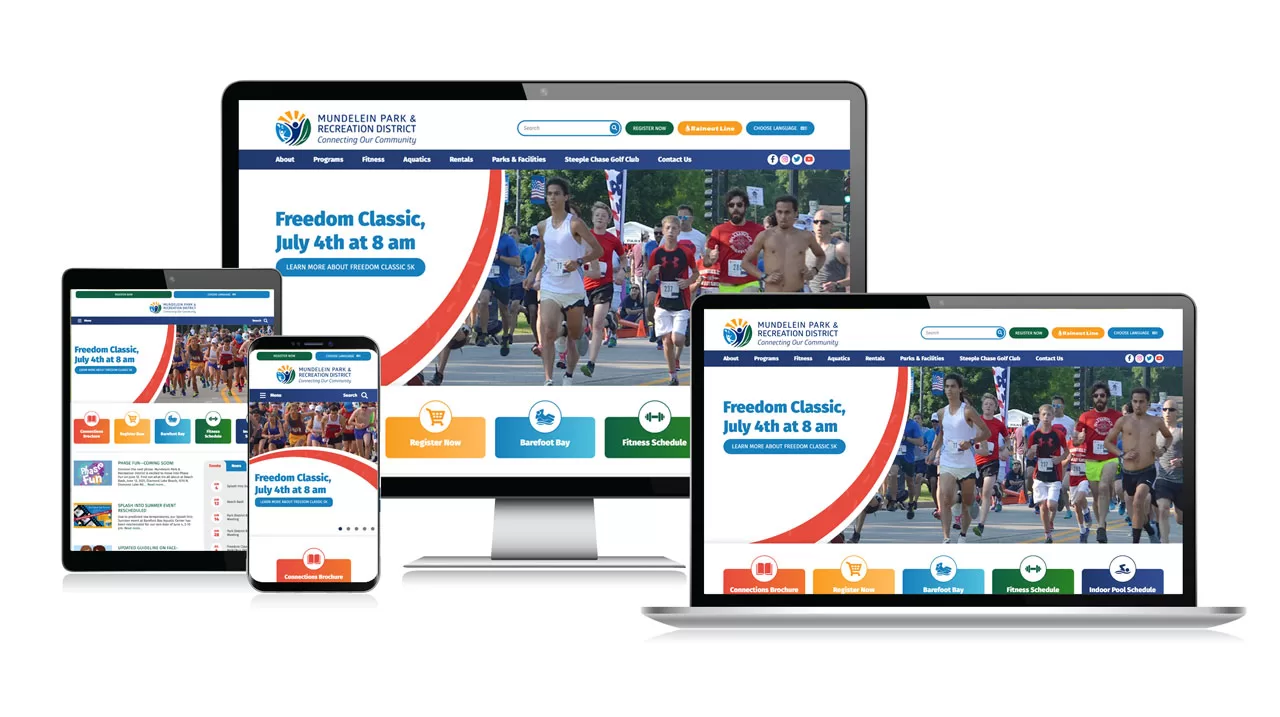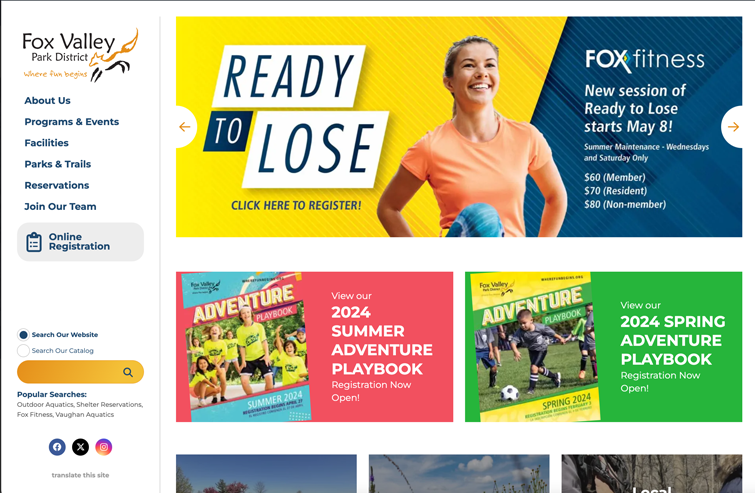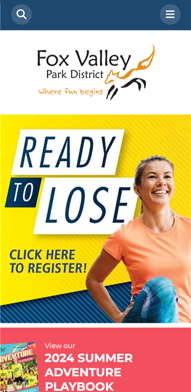
#1 Make Sure the Important Details Are Easy to Find
The first thing most visitors will want to know when visiting the website for a park is where to find it, what the hours of availability are, and whether there are any other considerations (seasonal risks, parking, fees, etc.) to pay attention to. You should make it as easy as possible to find this sort of information on your parks and recreation website.
In some cases that will mean placing the details on the homepage. At the very least, you should have a prominent tab that is easy for first-time visitors to locate from anywhere on your pages.
#2 Use Plenty of High-Res Pictures if Possible
One of the big appeals of a park, whether it’s a municipal park or state park, is wide open green spaces. Things like pools, lakes, playgrounds, and hiking trails also draw in visitors. The more you can feature photos of these in your park’s website, the easier it will be to draw in traffic, both online and at the space itself.
Because photos are so important to parks and recreation web design, it might be worth it to get fresh high-resolution photos for the project.
#3 Consider Adding Event and Registration Features
Do you have events that are regularly hosted within your park? What about camping or cookout areas that need to be reserved in advance? These sorts of transactions can be handled quickly, securely, and inexpensively online – freeing up park staff to focus on other concerns.
In many cases, our clients have been able to save large amounts of time and money by automating routine scheduling and reservation tasks. Why shouldn’t your park benefit?
#4 Emphasize Accessibility for Everyone
Accessibility is a major concern in any area of web design, but it’s particularly pertinent when public spaces are involved. It goes without saying that your parks and recreation website should be compatible with mobile devices. You should also ensure it’s built in such a way that those with disabilities can still navigate the pages and access any content.
Web design has come a long way with regard to accessibility in the last few years. We can show you how easy it is to achieve ADA compliance while making your site easier for everyone to use.
#5 Keep Your Parks and Recreation Website Updated
As a final point, don’t forget that you need to update your parks and recreation website on a regular schedule. It only takes a few minutes to update schedules or photos, note any changes to things like parking or driving directions, and ensure that online registrations are working properly.
Making this small effort increases the value of your park website for the public while also helping you get the best possible product for your state’s or municipality’s investment.
Need Help With a Parks and Recreation Website?
At Weblinx, we have experience with hundreds of web design projects – including several for state and local parks. To learn more about what we can do to help you promote your public space, contact our team today to schedule a free consultation or request a proposal. We will be happy to answer any of your questions!






